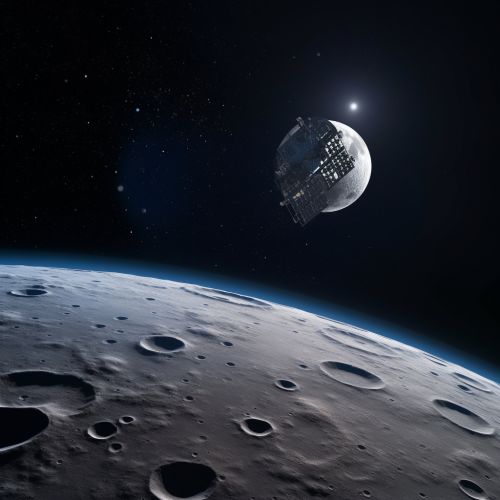Lunar Reconnaissance Orbiter
Overview
The Lunar Reconnaissance Orbiter (LRO) is a NASA robotic spacecraft currently orbiting the Moon in an eccentric polar mapping orbit. Launched on June 18, 2009, the mission objectives of the LRO are to create a comprehensive atlas of the Moon's features and resources necessary to design and build a lunar outpost.
Mission Objectives
The primary objective of LRO is to conduct investigations that will prepare for and support future human exploration of the Moon. To achieve this, LRO focuses on four main areas: identifying potential lunar resources, gathering detailed maps of the lunar surface, investigating how the Moon's radiation environment could affect humans, and providing measurements to aid in the safe landing of future human and robotic missions to the Moon.
Design and Instruments
The LRO spacecraft is a modified version of the Mars Reconnaissance Orbiter's spacecraft, which includes a main bus and a science instrument module. The main bus houses the spacecraft's propulsion system and avionics, including the onboard computer, telecommunications, and power systems. The science instrument module carries a suite of seven instruments that will return lunar imagery, topography, temperatures, and more.
Scientific Instruments
The LRO carries seven scientific instruments. These include:
- The Lunar Reconnaissance Orbiter Camera (LROC), which acquires targeted narrow angle images of the lunar surface capable of resolving small-scale features as well as a wide-angle camera to assist in landing site identification.
- The Lunar Orbiter Laser Altimeter (LOLA), which measures landing site slopes, lunar surface roughness, and generates a high resolution 3D map of the Moon.
- The Lunar Exploration Neutron Detector (LEND), which maps the lunar surface hydrogen abundances.
- The Diviner Lunar Radiometer Experiment, which identifies cold traps and potential ice deposits as well as providing surface temperature maps.
- The Lyman-Alpha Mapping Project (LAMP), which maps the entire lunar surface in the far ultraviolet.
- The Cosmic Ray Telescope for the Effects of Radiation (CRaTER), which investigates the effect of galactic cosmic rays on tissue-equivalent plastics as a constraint on models of biological response to background radiation.
- The Miniature Radio Frequency (Mini-RF) technology demonstration, which is a synthetic aperture radar that images the poles and tests communication capabilities.


Mission Phases
The LRO mission is divided into several phases. The Launch/Early Orbit Phase began with the launch on June 18, 2009, and lasted until June 23, 2009. The Commissioning Phase followed, lasting until September 15, 2009. The Primary Mission Phase lasted one year, from September 2009 to September 2010. The Extended Mission Phase 1 lasted from September 2010 to September 2012, and the Extended Mission Phase 2 began in September 2012 and is ongoing.
Discoveries and Contributions
Since its launch, the LRO has made significant contributions to lunar science. These include the discovery of water ice in permanently shadowed regions at the Moon's poles, detailed mapping of the lunar surface at high resolution, and measurements of the radiation environment.
Future Plans
NASA plans to continue operating the LRO as long as it remains productive and its operation is feasible. The data it continues to gather will be invaluable in planning future human and robotic missions to the Moon.
